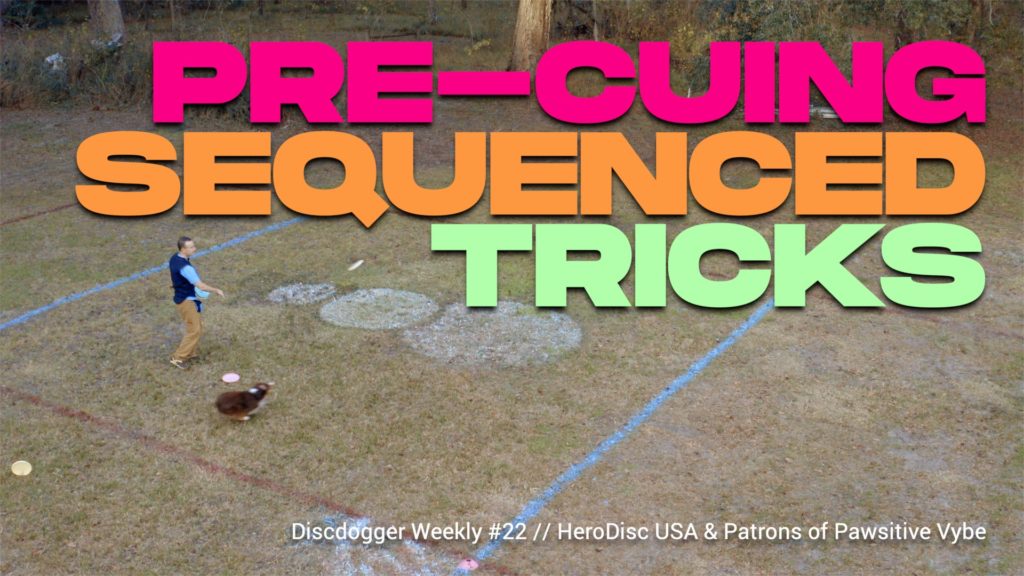
Pre-Cuing for DiscDog Sequences with Jack & Remix
Disc dog sequencing is an art form. A discdog sequence is more than just a list of tricks. A good Sequence, capital ‘S’ should be greater than the sum of the tricks and should be more than just a bunch of tricks in sequence. Tight sequences where the dog and handler are in complex, cooperative movement, together, are quite beautiful and wind up creating this sense of the Sequence being greater than the sum of the tricks.
Trick Into Trick > Trick Out of Trick
Jack Fahle and I are of the same mind when it comes to building sequences. We both go for the definition of sequence laid out above where the Sequence becomes something greater than the sum of the tricks or where it is somehow something more than just a bunch of tricks in a row.
One of the ways to think about this that Jack and I talk about quite frequently is “Trick Into Trick and Trick Out of Trick” when tricks are layered like this nearly all sequences become greater than the sum of the tricks. It’s kind of how Jack and I roll when it comes to jamming and it defines our sense of Flow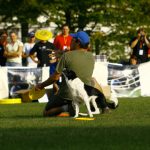 Flow is a key component of the modern day disc dog game. Keeping your dog moving with seamless, ever moving and flowing sequences with little to no set up time is the goal... More.
Flow is a key component of the modern day disc dog game. Keeping your dog moving with seamless, ever moving and flowing sequences with little to no set up time is the goal... More.
This type of play is not an exaggeration, either. It’s no academic distinction between this type of thought process and simply linking tricks together.
When tricks are linked tightly like this each trick needs to be resolved in a fashion that fits the next trick. This means that the dog has to know what’s coming before the current trick is completed.
Pre-Cuing and Preparation
I tend to think about this as pre-cuing. I want to give the cue for the next trick early enough so the dog can resolve the trick that is being done in such a fashion that we are prepared for the next one.
This is similar to how the handler has to move and prepare while the dog is in the air or is busy catching the disc in order to flow. You simply can’t wait to move until the dog is done doing their thing. If you do, you are going to be late.
For the dog to be prepared in similar fashion, the dog needs to know beforehand what is coming. This can easily be done through repetition, as Jack and I mention during this session, but when we run multiple dogs or run sequences that are similar to each other and can be conflated by the dog, repetition is simply not enough.
We need some way to tell the dog, early, what is coming so they can adjust the finish of the trick that is being done so that it seamlessly flows into the next trick. Giving a pre-cue, while the dog is in the middle of the current behavior is a simple way to allow the dog to prepare and resolve the trick properly for the next one.
Marking With the Pre-Cue
A simple way to think about this and to put the pre-cue into practice is to mark the current behavior with it. Essentially use the next cue as the positive marker for the current behavior. This will help ensure that the handler doesn’t get caught up in the moment and remembers to cue before the current trick is done.
In the Rear Cross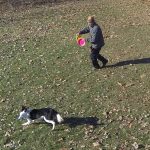 On a Rear Cross, the dog switches Flanks with the behind her. From clock to counter clockwise Flank or vice versa. Taken directly from the canine agility world, the Rear Cross is a... More (Squib) to Back Vault
On a Rear Cross, the dog switches Flanks with the behind her. From clock to counter clockwise Flank or vice versa. Taken directly from the canine agility world, the Rear Cross is a... More (Squib) to Back Vault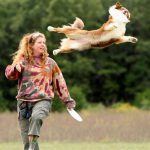 The dog uses the player´s body as a launching pad to jump for a disc. A Vault is a leaping catch from the handler’s body. The dog leaves the ground for the target... More sequence and the Flip to Leg Vault sequences Jack needs to give that cue while remix is busy flipping or Rear Crossing. If he does that Remix will land the flip in order to Leg Vault or finish the Rear Cross
The dog uses the player´s body as a launching pad to jump for a disc. A Vault is a leaping catch from the handler’s body. The dog leaves the ground for the target... More sequence and the Flip to Leg Vault sequences Jack needs to give that cue while remix is busy flipping or Rear Crossing. If he does that Remix will land the flip in order to Leg Vault or finish the Rear Cross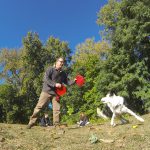 A Cross is an canine agility term that describes a change of working sides. Your dog moves from your left to your right (Heel to Side) or from Clock to Counter. Crosses are... More with proper striding and angulation for the Back Vault.
A Cross is an canine agility term that describes a change of working sides. Your dog moves from your left to your right (Heel to Side) or from Clock to Counter. Crosses are... More with proper striding and angulation for the Back Vault.
Resolving these tricks for the next move becomes critical to success, smoothness, and safety. It should be easy to see the difference in confidence and competence by dog, handler, and team when the pre-cues are given on time.
In the Rebound to 1-2 (Double) sequence that Jack and Remix are doing, Jack needs to give the Double cue before making the first throw of the Double, largely because throw #2 is blind and Remix is busy.
If Jack simply gets into the habit of marking the Rear Cross, the Flip, and the Rebound with the Vault, Vault, and Double cues respectively, he can’t forget to pre-cue, and Remix will know what’s happening next regardless of the context or possible conflation of their many, many moves and sequences.
Complex or Compound Cues as Pre-Cue
In the Through A Through is a set up move where the dog runs between the handler’s legs. The dog can move from front to back or side to side and can even weave. A Through... More n Flip move, offering a complex or compound cue as a single cue, linking them as Through-N-Flip, tells the dog that this Through behavior is going to resolve in flipping fashion.
A Through is a set up move where the dog runs between the handler’s legs. The dog can move from front to back or side to side and can even weave. A Through... More n Flip move, offering a complex or compound cue as a single cue, linking them as Through-N-Flip, tells the dog that this Through behavior is going to resolve in flipping fashion.
The difference between the catch and miss on the Through and Flip cue was made by Jack offering that compound or complex cue – taking those two cues and slapping them together so Remix knows before entering the Set Up Move that this set up move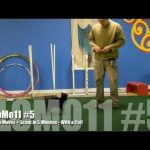 Set Up Moves are tricks that are used to establish timing and position in disc dog freestyle. Traditional tricks include: Around, Through, Backwards Through, and Scoot, but any or all of your tricks,... More is going to resolve in a flipping type movement.
Set Up Moves are tricks that are used to establish timing and position in disc dog freestyle. Traditional tricks include: Around, Through, Backwards Through, and Scoot, but any or all of your tricks,... More is going to resolve in a flipping type movement.
This is very important for Jack and Remix because they do a lot of different moves from this through behavior, including a tiny little dump off toss for UpDog Games. If Jack isn’t perfect in his body language and timing, Remix is very likely to get a late start on that flip and wind up slightly too far away from Jack to make that flipping catch.
This communication is made more delicate and necessary because Jack runs several dogs with many similar moves, making it more likely that he is going to have some flexible and imprecise body language between his multiple dogs and creative requirements.



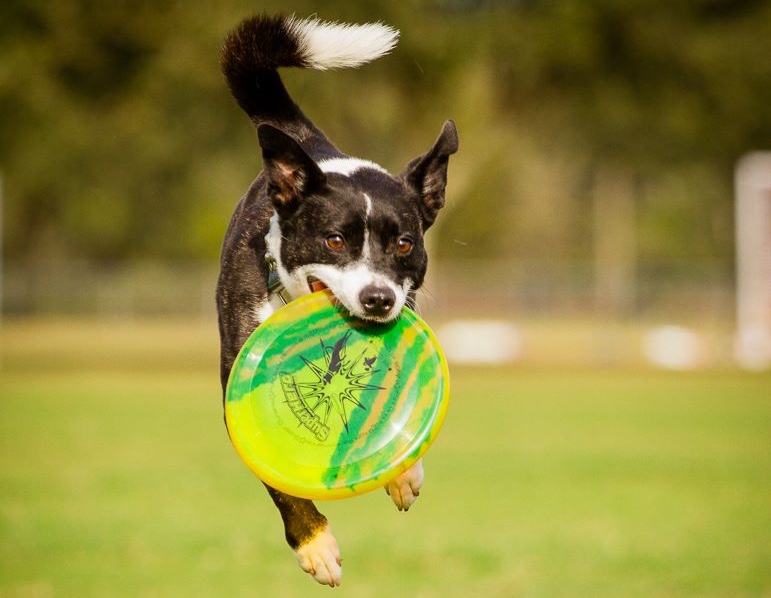
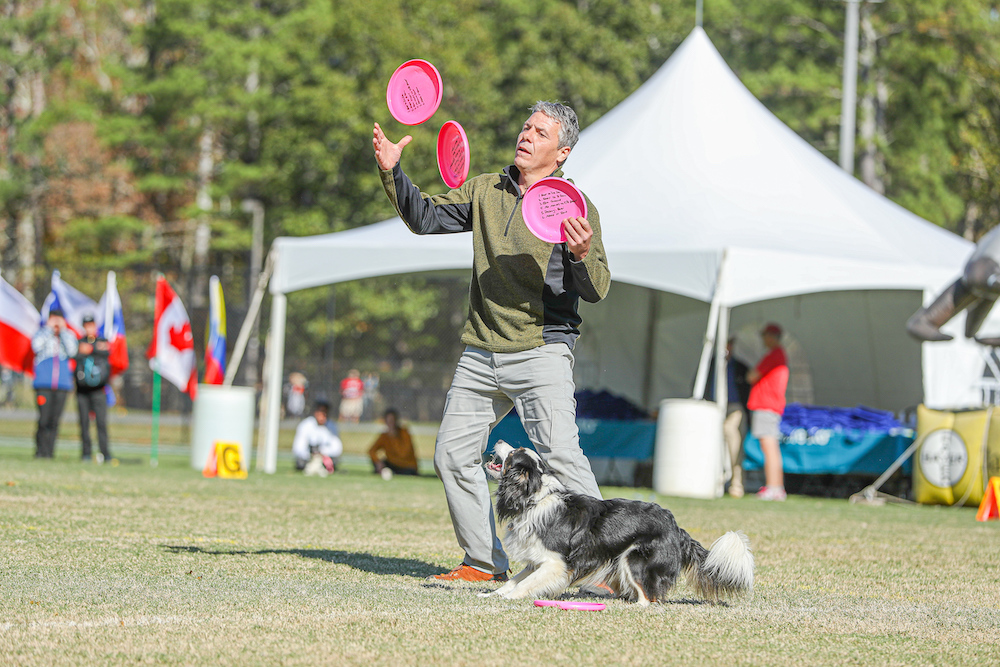
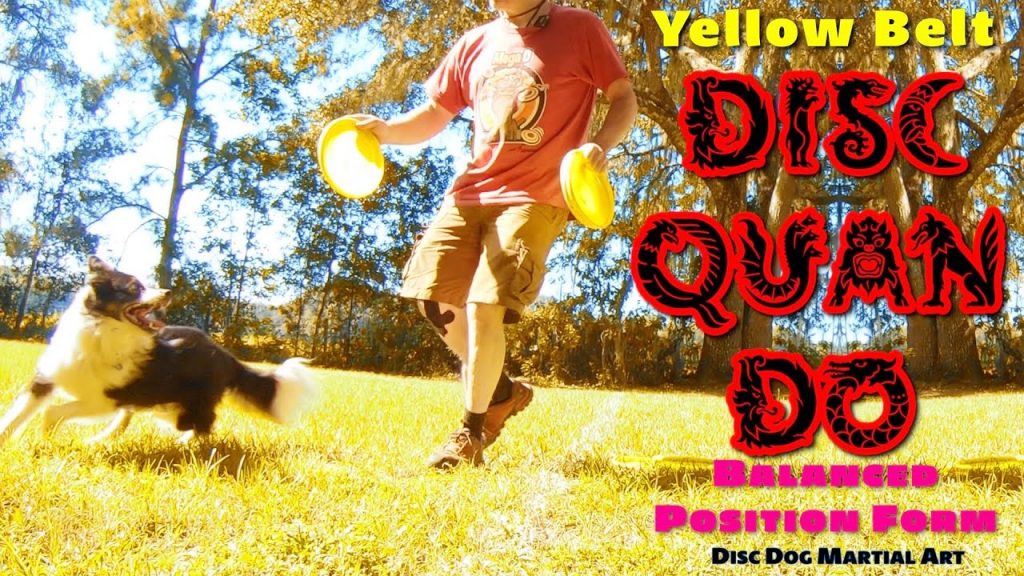

Hi Ron! The concept of Pre-cuing looks like a great way to make a creative Flow game. I like it because I think that a Flow is a main marker of solid performance. Hope we will see this concept on practice in additional videos. In your Sequence Building course you consider Wait concept for a tricks linking. Is there a some contradiction between Pre-cuing and Wait concepts? Or they are complementary?
They are the same, with the same timing.
The Wait cue is given so the dog resolves the trick FOR THE WAIT.